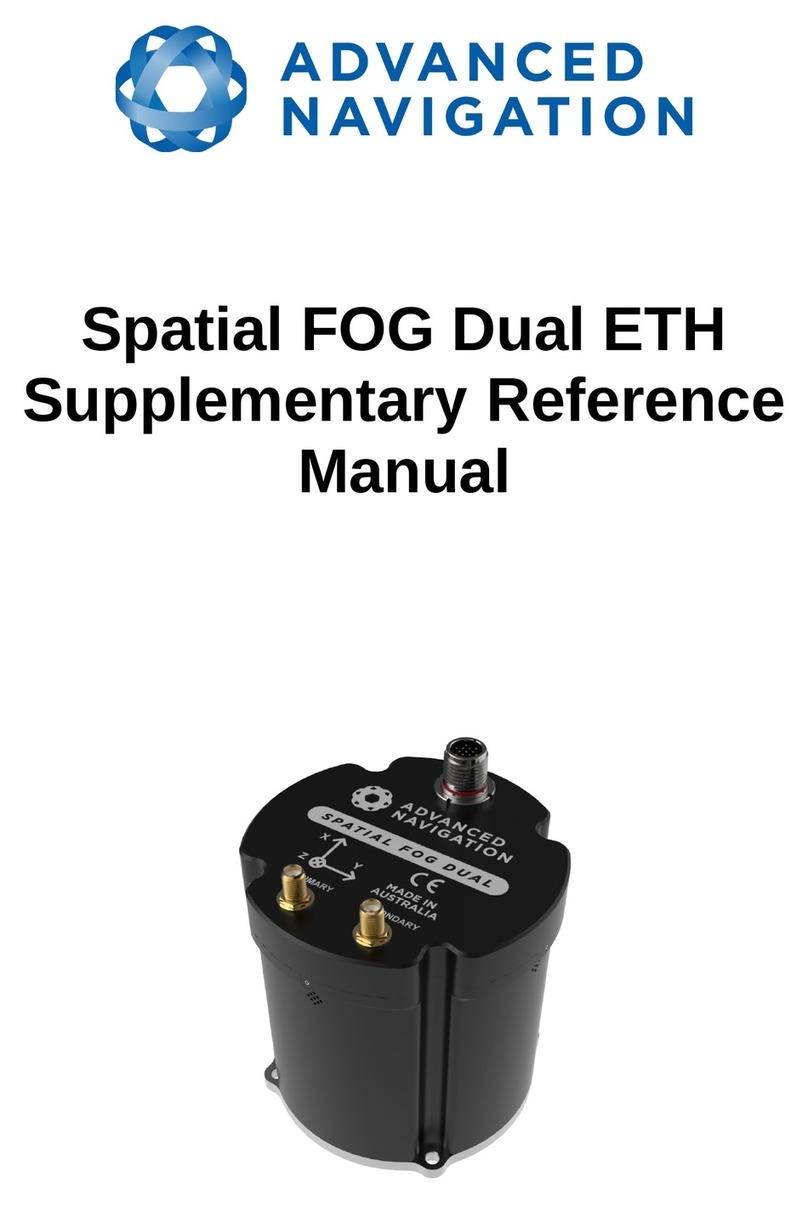Spatial OEM Reference Manual
Page 2 of 88
Version 2.7
Table of Contents
1 Revision History..........................................................................................................................7
2 Foundation Knowledge..............................................................................................................10
2.1 GN ................................................................................................................................ 10
2.2 IN .....................................................................................................................................10
2.3 GN /IN ..........................................................................................................................10
2.4 AHR ................................................................................................................................. 10
2.5 The ensor Co-ordinate Frame..........................................................................................11
2.6 Roll, Pitch and Heading......................................................................................................11
2.6.1 Roll.............................................................................................................................11
2.6.2 Pitch........................................................................................................................... 12
2.6.3 Heading......................................................................................................................13
2.6.4 econd Right Hand Rule............................................................................................13
2.6.5 Rotation Order............................................................................................................14
2.7 Geodetic Co-ordinate ystem............................................................................................14
2.8 NED Co-ordinate Frame....................................................................................................16
2.9 ECEF Co-ordinate Frame..................................................................................................17
3 Introduction................................................................................................................................18
4 pecifications............................................................................................................................19
4.1 Mechanical Drawings.........................................................................................................19
4.2 Navigation pecifications...................................................................................................19
4.3 ensor pecifications........................................................................................................20
4.4 GN pecifications..........................................................................................................20
4.5 Communication pecifications...........................................................................................21
4.6 Hardware pecifications....................................................................................................21
4.7 Electrical pecifications.....................................................................................................22
4.8 Power Consumption...........................................................................................................22
4.9 ensor Calibration.............................................................................................................23
5 PCB Design and Integration......................................................................................................24
5.1 PCB Mechanical Mounting.................................................................................................24
5.2 Electrical Connector...........................................................................................................24
5.3 Connector Pin-out..............................................................................................................25
5.3.1 Interoperability with Different Voltage ystems...........................................................26
5.3.2 Reset Line..................................................................................................................26
5.3.3 Basic Connection.......................................................................................................27
5.4 Recommended Footprint...................................................................................................27
5.5 Power upply.....................................................................................................................29
5.6 U.FL RF Connector............................................................................................................30
5.7 Pin Protection....................................................................................................................30
6 Installation.................................................................................................................................31
6.1 Position and Alignment......................................................................................................31
6.1.1 Alignment...................................................................................................................31
6.2 GN Antenna..................................................................................................................32
6.3 Odometer........................................................................................................................... 33
6.4 Magnetics..........................................................................................................................33
6.5 Vibration.............................................................................................................................34
7 Operation.................................................................................................................................. 35
7.1 Filter................................................................................................................................... 35
7.2 Initialisation........................................................................................................................35
7.3 Hot tart.............................................................................................................................35




























